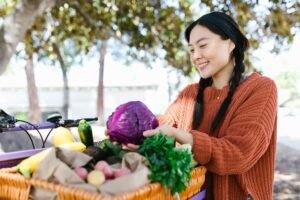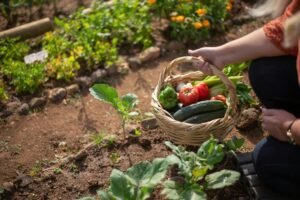Vegetable Importer:
The global demand for fresh vegetables never stops. A vegetable importer helps meet this need by bringing quality produce from farms worldwide to local markets. Their work ensures variety, availability, and food security for millions of people every day.
Understanding the Role of a Vegetable Importer in Global Trade
A vegetable importer plays a crucial role in global food distribution. With increasing demand for fresh produce year-round, importers ensure that vegetables reach markets regardless of the local season. They connect farmers in one country with consumers in another. This system makes it possible to enjoy avocados in winter or bell peppers out of season.
The work involves more than just transportation. Vegetable importers must handle compliance, logistics, and food safety. They work with international suppliers to source the freshest vegetables. Then, they manage customs processes to bring them into the target country. Their work impacts food supply chains globally.
In today’s globalized market, importing vegetables has become essential. Countries with limited agricultural production rely on foreign produce. Importers bridge this gap. They help maintain food security, ensure variety, and support local businesses such as restaurants, supermarkets, and wholesalers.
Why Import Vegetables?
Local production cannot meet all the demand. Some regions face extreme weather or poor soil. Others lack the infrastructure for year-round farming. Importing fills this gap. It brings in vegetables that would otherwise be unavailable.
Consumers also seek variety. They want exotic vegetables and international flavors. Importing offers that. For example, importing okra from India or bok choy from China brings diversity to local diets.
Sometimes, imported vegetables are more affordable. Lower labor costs in exporting countries reduce overall prices. This helps consumers get better deals at local stores. At the same time, importers support international farmers by creating demand.
How the Import Process Works
Vegetable importers follow strict procedures. First, they identify reliable growers overseas. Then they negotiate contracts, often based on quality standards, delivery times, and volume.
Once an agreement is reached, exporters ship the vegetables. The importer then handles customs clearance. Each country has different rules. Food safety checks, tariffs, and packaging regulations are just a few. Importers must comply to avoid delays or rejections.

After customs, vegetables go to warehouses or directly to retailers. Cold storage plays an important role. Without it, perishable items could spoil. Importers often invest in temperature-controlled logistics to maintain freshness.
To learn more about how global supply chains function, visit the World Trade Organization website.
The Importance of Quality Control
Importing vegetables involves food safety risks. Contamination, spoilage, and pesticides are real concerns. Therefore, importers work closely with food inspectors and labs. Samples are tested for compliance with health standards.
Many importers adopt certifications like HACCP or ISO to ensure quality. These certifications show that they follow best practices. Retailers and consumers trust such systems.
Proper packaging is another critical step. Some vegetables need breathable wraps, while others require vacuum sealing. Each type of produce has different storage needs. Importers must understand these to avoid waste.
Countries That Rely Heavily on Vegetable Imports
Several countries depend on vegetable imports for daily consumption. Nations in the Middle East, such as the UAE and Saudi Arabia, import vast quantities. Harsh climates limit local production.
Singapore and Hong Kong are other examples. Limited land and urban environments make large-scale farming impossible. These countries rely on importers to maintain a stable food supply.
Even developed nations like the United Kingdom import vegetables. Seasonal limitations and high labor costs drive demand for foreign produce. As a result, importers become essential to national food strategies.
For insights on food security challenges, read this FAO report on global agriculture.
The global demand for fresh vegetables never stops. A vegetable importer helps meet this need by bringing quality produce from farms worldwide to local markets. Their work ensures variety, availability, and food security for millions of people every day. To explore how food products travel globally, visit our guide on global fruit importers.
Challenges Faced by Vegetable Importers
The job is not without its difficulties. Political instability in exporting countries can delay shipments. Strikes at ports or customs offices cause further setbacks.
Importers also face changing regulations. A law that was valid last year may not apply today. Staying updated is critical.

Currency fluctuations also impact profits. If the local currency weakens, import costs rise. Importers must manage financial risk through hedging and smart contract terms.
Climate change is another concern. Droughts or floods in exporting countries reduce crop yields. This leads to price increases and shortages. Importers must constantly adjust their sourcing strategies.
Benefits to Local Economies
Vegetable importers support many sectors. They provide products to supermarkets, restaurants, and food service companies. This keeps shelves stocked and kitchens running.
Local jobs are also created. From logistics staff to quality control teams, the supply chain depends on human effort. Importing also encourages infrastructure development like cold storage and transport systems.
Importers contribute to food diversity. They expose people to global tastes and healthy alternatives. For example, importing kale or zucchini introduces new cooking styles and diets.
How to Become a Successful Vegetable Importer
Starting in this business requires market knowledge and strong supplier relationships. Research is the first step. You need to know what vegetables are in demand and which countries produce them best.
Creating a reliable supply chain is essential. Start by contacting growers or exporters. Visit farms if possible. Build trust through consistent communication and fair business practices.
Understand import regulations. Each country has specific requirements. Study them carefully to avoid costly mistakes. You may also need to register with food safety authorities and obtain licenses.
Marketing also plays a role. Promote your imported products to retailers and food service buyers. Explain how your products are fresher, safer, or more affordable.
If you’re just starting, check out this step-by-step guide to food importing from the U.S. International Trade Administration.
Technology and Modern Importing
Modern vegetable importers use technology to improve efficiency. Software helps track shipments in real time. Temperature sensors monitor produce conditions during transport.
Artificial intelligence is also being used. AI can predict demand trends or suggest optimal shipping routes. These tools help importers reduce waste and improve margins.
Blockchain is becoming popular too. It ensures transparency. Every transaction is recorded. Buyers know where the vegetables came from and how they were handled.
Technology makes importing smarter and safer. It allows importers to stay competitive in a demanding market.
Internal Links to Related Resources
To explore other sectors in food distribution, read our article on global fruit importers. For tips on managing perishable logistics, visit our post on cold chain management.
For people curious about export opportunities, check our resource on how to export agricultural goods. These internal links offer extra value to readers interested in food trade.
FAQs About Vegetable Importers
What does a vegetable importer do?
A vegetable importer sources vegetables from international suppliers and brings them into local markets. They handle contracts, compliance, and logistics.
Why are imported vegetables important?
Imported vegetables increase variety and fill gaps in local production. They ensure year-round availability of essential produce.
Do imported vegetables meet safety standards?
Yes. Reputable importers test for contaminants and comply with food safety regulations. Many use certifications like HACCP or ISO.
Which countries import the most vegetables?
Countries like the UAE, UK, Singapore, and Saudi Arabia import large quantities due to climate or limited farmland.
Is importing vegetables profitable?
It can be. Success depends on supplier relations, market demand, logistics efficiency, and regulatory compliance.
How do importers maintain freshness?
They use cold storage, temperature-controlled trucks, and fast logistics systems to keep vegetables fresh.
Can small businesses become vegetable importers?
Yes. With research, licensing, and strong supplier connections, small businesses can succeed in this industry.
What risks do vegetable importers face?
Risks include delays, regulatory changes, weather disruptions, and currency fluctuations. Mitigating these is part of the job.
Conclusion
Vegetable importers are vital players in today’s global food system. They ensure that fresh, diverse, and nutritious vegetables reach consumers all over the world. Their work supports local economies, enhances food security, and introduces new tastes to dining tables.
Through logistics, quality control, and strategic sourcing, importers keep supply chains moving. While challenges exist, technology and global cooperation continue to improve the industry.
If you’re thinking about entering the vegetable import business or simply want to understand how your food gets to you, it’s clear that vegetable importers play an irreplaceable role. To learn more about related topics, check out our guide on food supply chains and explore how agriculture connects the world.